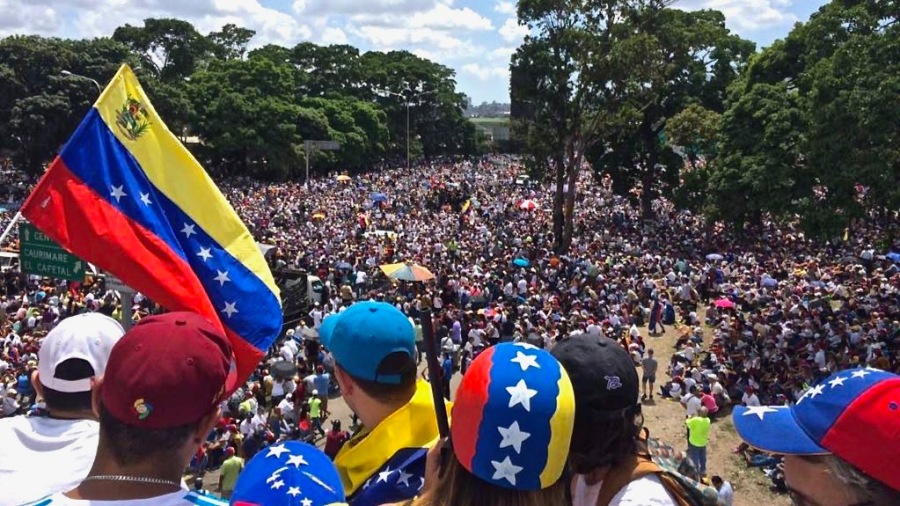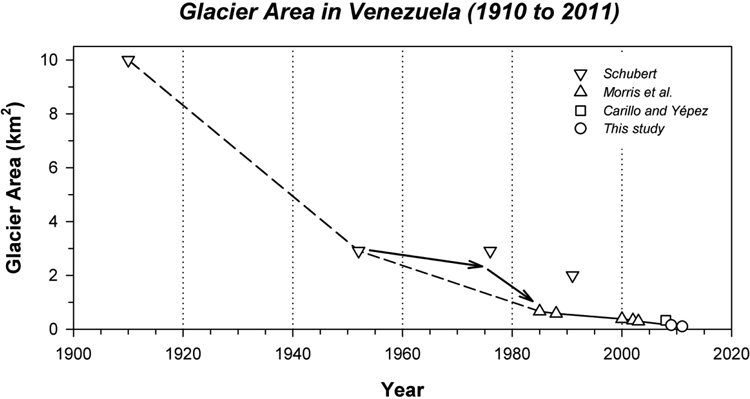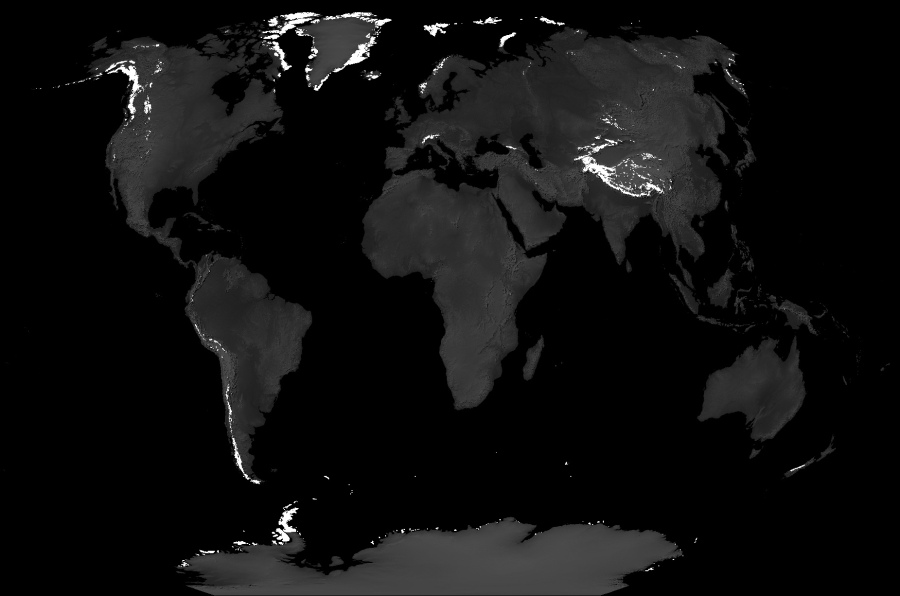Featured image: The Humboldt glacier atop Pico Humboldt in Venezuela. Figure from Braun & Bezada (2013). Reproduced with permission from author. Original caption: “The Humboldt glacier viewed from Pico Espejo on 4 February 2009 with clouds obscuring the summit of Pico Humboldt (photograph by Carsten Braun). Note the remaining seasonal snow cover.”
This weekend, I was reading The Economist in the tiny alpine country of Lichtenstein with a wide view over the mountains. Although snow had started to dust the peaks, a good amount had melted away. It was 70 degrees outside, 20 degrees higher than the average temperature for a mid-October day.
As the sun beamed down, an article entitled “The death of Venezuela’s Humboldt glacier” caught my eye. High in the Cordillera de Mérida, a series of mountain ranges that includes the Venezuelan Andes in the northwest of the country, the last Venezuelan glacier is melting away. It sits atop the 16,207-foot Pico Humboldt, a mountain named after the flamboyant Prussian geographer and explorer, Alexander von Humboldt, who carried out groundbreaking scientific expeditions in South America in the early 1800s.
The article somberly notes that once the Humboldt glacier disappears, “Venezuela will then be the first country in the satellite age to have lost all its glaciers.” As recently as 1991, Venezuela had five glaciers. 20,000 years ago during the last ice age, glaciers covered 230 square miles of the country, which we now think of as a largely humid and tropical place – one that is also in a nationwide state of turmoil.

Venezuela’s chaos makes climate change research all but impossible
Climate change is accelerating the rate of glacier retreat in the Andes, just like in the Arctic. Yet whereas scientists can generally reach most places near the top of the world without fear of political retribution, in Venezuela, economic destitution and social unrest are making it all but impossible for scientists to access the glacier in its last remaining years. Under normal conditions, the glacier should also be fairly easy to reach – easier than, say, the Greenland Ice Sheet or the remote interior of Antarctica. As the crow flies, Venezuela’s adventure sports and mountaineering hub, Merida, is less than ten miles from the Humboldt Glacier. The city boasts the world’s highest cable car (which is also one of the world’s longest, at nearly eight miles), reaching up to Pico Espejo, a mountain abutting the more remote Pico Humboldt. With Venezuela on edge, however, and travel warnings in effect from numerous foreign offices, this accessibility is moot to international scientists.

Scientists from Venezuela, too, probably have other priorities at the moment than leading expeditions up to the glacier, given that starvation has become a national crisis and the government is trying, unsuccessfully, to encourage people to eat bunnies to cope with food shortages. A survey last year revealed that 75% of Venezuelans have lost an average of 19 pounds. Venezuela, then, is shrinking in more ways than one.

Carsten Braun, a glaciologist who may have led one of the last scientific expeditions to the Andean peak in 2015, wrote with Dr. Maximiliano Bezada in The Journal of Latin American Geography, “The lack of local glacier and climate data limits our ability to appreciate the history of glaciers in Venezuela and a comprehensive monitoring program is urgently needed before Venezuela becomes an ice-free country.” Writing in 2013, he predicted that would happen before the end of this decade. Now, that is a little over two years away.
I asked Dr. Braun whether Venezuela-based scientists could do the research, and he responded they potentially could but face challenges known by scientists worldwide: obtaining grant money. Given Venezuela’s dire economic straits, winning funding to purchase expensive scientific equipment to monitor glaciers is likely all but impossible at the moment.

Satellites bear witness to glacial retreat
It is a scientific tragedy that politics are preventing fieldwork atop Pico Humboldt – a mountain, ironically, named in honor a scientist. Yet the one silver lining is that, as The Economist mentioned, we live in the satellite age. We can witness the retreat of the Humboldt glacier from space.
With forests and plantations covering nearly two-thirds of Venezuela, thick clouds often blanket the equatorial country. That makes it difficult for satellites to catch a clear view of the Cordillera de Mérida. Yet on a clear day in January 2015, it was possible to see the glacier in its final years.
Additionally, since the “satellite age” spans back to 1957, and satellite imagery from the storied, publicly available NASA Landsat program dates back to 1972 (although the earliest image I was able to find of the satellite is from 1988), it’s possible to capture the decline of the Humboldt Glacier over time: slow, at first, and now more rapid.

The Humboldt Glacier sits in a valley high above its former glacial area. This makes it a hanging glacier, so called because they often end abruptly at the edge of a cliff. There are several of these in South America. One of the most dramatic is the Queulat Glacier in Patagonia, which was shown briefly in Planet Earth 2. The glacier plunges off a cliff into a river that churns through a lush jungle below – a very different scene than in the Arctic, where glaciers typically calve into freezing, ice-filled waters. In some ways, the crashing of two biomes together in the Andes is perhaps even more spectacular.

Glacier melt of planetary proportions
Most of the world’s attention on retreating ice focuses on the Arctic. This year, for instance, six major libraries in the U.S., Greenland, and Scandinavia are holding a series of events and exhibitions on the region’s disappearing ice in a project called Arctic Imagination. Yet more attention needs to be paid to glaciers in the Global South, whose meltwater often supports communities in critical ways. Just as ice in the Arctic makes hunting and fishing possible for northern peoples, ice in the Andes provides fresh drinking water and irrigation for crops. Patagonia’s glaciers provide 70% of Argentina’s freshwater.
Thinking about the disappearance of the ice on a global scale – the loss of the planet’s cryosphere, effectively – will help prevent being boxed in by regional thinking that focuses only on the Arctic or only on South America. Cross-regional exchanges on melting ice may also spur more wide-ranging conversations about a range of topics, from climate change adaptation to strategies for undertaking scientific fieldwork in politically volatile places. Scientists still managed to carry out research in Russia in the “Wild Nineties” following the dissolution of the Soviet Union, for instance. Are any of these lessons applicable in Venezuela? Additionally, Argentina passed a glacier protection law preventing damage to the icy behemoths, which not only climate change jeopardizes, but also mining. Could such a law have any relevance in a place like Greenland, where mining is also on the rise?
For the moment, how glaciologists can continue to do work in Venezuela is unclear. But at the very least, bringing Arctic ice loss into dialogue with severe ice retreat in a continent that most people associate with the Amazon rather than glaciers would open up some new possibilities for future research – and, hopefully, future strategies to adapt and move forward in a rapidly changing environment.



0 Comments
Far from the Arctic, Venezuela’s last glacier melts away